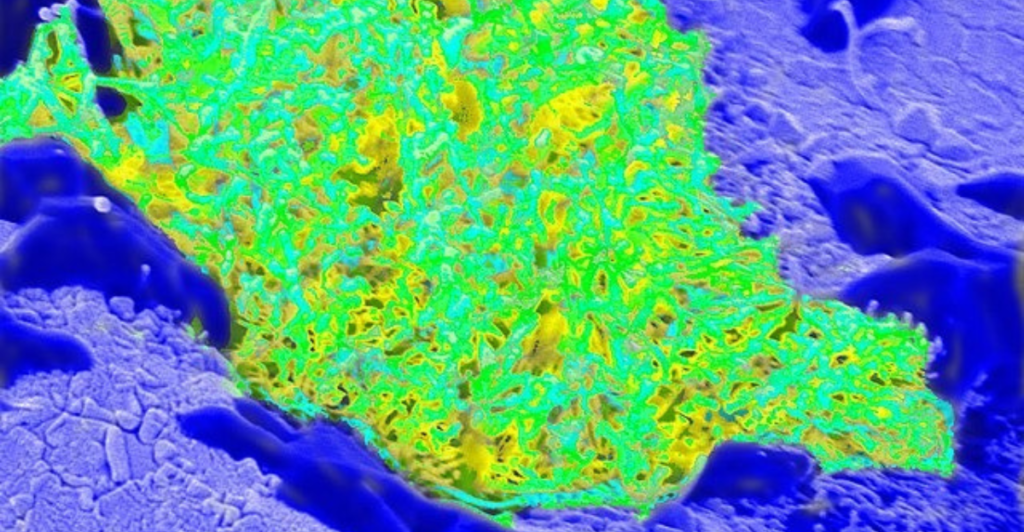
In recent years, the presence of micropollutants in water sources has become a significant environmental concern. Among these contaminants, steroid hormones are particularly troubling due to their endocrine-disrupting effects on wildlife and potential health risks to humans. Traditional water treatment methods often fall short in effectively removing these persistent compounds, necessitating innovative solutions to safeguard water quality.
The Latest Technology

Recent advancements in nanotechnology have introduced carbon nanotubes as a promising tool for capturing and degrading steroid hormones in water. These cylindrical nanostructures exhibit unique properties, including high surface area and rapid mass transfer capabilities, making them ideal candidates for water purification applications. Studies have demonstrated that carbon nanotube membranes can facilitate the adsorption and subsequent degradation of steroid hormones, offering a dual approach to mitigating this class of micropollutants.
The Challenge of Steroid Hormones in Water

Steroid hormones, both natural and synthetic, enter aquatic environments through various pathways, including wastewater effluents, agricultural runoff, and industrial discharges. Once in the water, these compounds can disrupt the endocrine systems of aquatic organisms, leading to reproductive and developmental abnormalities. For instance, exposure to estrogenic compounds has been linked to the feminization of male fish, adversely affecting population dynamics.
What’s The Problem?

The persistence of steroid hormones in the environment is exacerbated by their resistance to conventional water treatment processes. Standard methods such as chlorination and biological filtration often fail to completely remove these contaminants, allowing them to persist in treated water supplies. This inadequacy underscores the need for advanced treatment technologies capable of effectively targeting and eliminating steroid hormones from water sources.
Carbon Nanotubes: A Novel Solution

Carbon nanotubes (CNTs) have emerged as a cutting-edge material in the field of water treatment. Their unique structural and chemical properties enable them to adsorb a wide range of contaminants, including steroid hormones. Research has shown that CNT membranes can rapidly adsorb these hormones onto their surfaces, facilitating subsequent degradation processes.
How It Works

One of the key advantages of CNTs is their ability to enhance mass transfer, allowing for efficient interaction between the contaminant and the reactive sites on the nanotube surface. This property not only improves the adsorption capacity but also accelerates the degradation of steroid hormones, making CNT-based systems highly effective in reducing micropollutant concentrations in water.
Recent Research and Findings

A recent study explored the efficacy of carbon nanotube membranes in removing steroid hormones from water. The researchers found that the pre-adsorption of hormones onto the CNT surface did not impede their degradation rates, highlighting the rapid mass transfer capabilities of these systems. This finding suggests that CNT membranes can serve as both adsorbents and catalysts, offering a comprehensive approach to water purification.
What The Studies Say

Another investigation examined the forces governing the interaction between steroid hormones and CNTs. The study revealed that the alignment and functionalization of CNT membranes play a crucial role in determining their adsorption efficiency. By optimizing these parameters, it is possible to enhance the removal of steroid hormones from water, paving the way for more effective treatment technologies.
Environmental and Health Implications

The successful integration of carbon nanotube technology into water treatment processes holds significant promise for mitigating the environmental and health impacts of steroid hormone contamination. By effectively removing these endocrine-disrupting compounds, CNT-based systems can help restore the ecological balance of aquatic ecosystems and reduce the risk of adverse health outcomes in humans.
Is It Better?

Moreover, the application of CNT membranes aligns with global efforts to develop sustainable and efficient water treatment solutions. As water scarcity and pollution continue to pose challenges worldwide, innovative technologies like CNTs offer a viable pathway to ensuring access to clean and safe water for all.
Challenges and Future Directions

Despite the promising potential of carbon nanotubes in water treatment, several challenges remain. The large-scale production and integration of CNT membranes into existing treatment infrastructure require further research and development. Additionally, the long-term stability and potential environmental impacts of CNTs themselves must be thoroughly assessed to ensure their safe application.
What Is Ahead

Future research should focus on optimizing the functionalization and alignment of CNT membranes to enhance their efficiency and selectivity for steroid hormones. Collaborative efforts between material scientists, environmental engineers, and policymakers will be essential in translating laboratory findings into practical solutions that can be implemented on a global scale.
Is It Working?

The advent of carbon nanotube technology represents a significant advancement in the fight against water micropollutants, particularly steroid hormones. The unique properties of CNTs enable them to effectively capture and degrade these persistent contaminants, offering a promising solution to a longstanding environmental challenge.
As research continues to unveil the full potential of carbon nanotubes in water treatment, it is imperative to address the associated challenges and ensure the safe and sustainable implementation of this technology. With continued innovation and collaboration, CNT-based systems may soon become a cornerstone of global efforts to secure clean and safe water for future generations.
Discover more of our trending stories and follow us to keep them appearing in your feed.

Meet the Massive Crocodiles That Make Their Homes 40 Feet Underground
13 Most Dangerous Creatures Found in North America’s Waters – Avoid Them at All Costs
Eco Engineers: 5 Animals That Can Reshape Waterways And Cause Disasters
17 USA Cities That Will Be Underwater by 2060 – How Close Are You?
Stay connected with us for more stories like this! Follow us to get the latest updates or hit the Follow button at the top of this article, and let us know what you think by leaving your feedback below. We’d love to hear from you!







